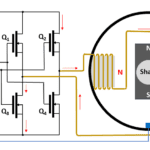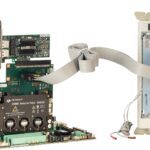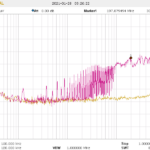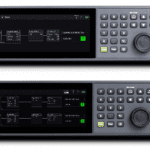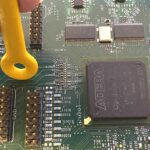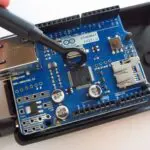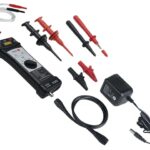Engineering a green mindset and sustainable future Growing up in the pre-2000s era with a power electronics engineer for a father, my family’s first introduction to power and energy efficiency efforts was primarily analog. The word “vampire” was associated with a TV show called Dark Shadows; it had nothing to do with standby power […]
Featured
How to choose and test an electric motor: part 1
Motors bridge electronics with electromechanical devices. To learn how to test motors and their electronics, you should first understand how motors work. Electric motors are ubiquitous, appearing in everything from electric toothbrushes to electric locomotives. There are, however, seemingly almost as many motor types and configurations as there are applications, which makes choosing and testing […]
What’s the difference between a PCIe analyzer and jammer?
Protocol analyzers and jammers let you test and troubleshoot the performance of PCIe interconnects. From generation to generation, PCIe speeds double. Today’s protocols can be challenging to test and qualify. In addition, advanced applications such as the non-volatile memory express (NVMe) solid-state drive (SSD) memory protocol developed specifically for use with PCIe require sophisticated testing […]
How to locate EMI emissions with near-field probes: Part 3
Part 3 of a series on using near-field probes for detecting EMI sources shows you how to set up a spectrum analyzer and how to detect emissions problems. Now that we’ve discussed the theory of measuring near-field emissions (Part 1) and how to use near-field probes (Part 2) to make the measurements let’s discuss how to […]
Signal generator puts four channels in a 2U-size box
Designed for bench and production use, the N5186A generates wireless signals to 8.5 GHz and includes a built-in reflectometer. Designing commercial or military wireless receivers, amplifiers, and systems means you’ll need to generate test signals. Keysight’s N5186A MXG vector-signal generator (datasheet) is available in one-channel or four-channel models with Type-N connectors. Each channel can generate […]
How to locate EMI emissions with near-field probes: Part 2
Now that you know a little theory of near-field measurements, how do you use near-field probes and a spectrum analyzer to help you troubleshoot and mitigate emissions issues? Remember, as mentioned in Part 1, that deciding whether to use an H-field or E-field probe depends on whether you’ll be probing high switching currents — di/dt […]
How to locate EMI emissions with near-field probes: Part 1
Near-field probes let you find the sources of near-field and far-field EMI that ruin your design, and your day. You don’t need to know Maxwell’s Equations to troubleshoot your designs.
What hardware accessories can you attach to a USB oscilloscope?
A wide range of hardware accessories are available for USB oscilloscopes. This FAQ reviews a few of the more popular options including a variety of probes plus wireless synchronization of multiple USB oscilloscopes and chassis that can combine and synchronize USB oscilloscopes with other instruments like arbitrary waveform generators and multimeters. Probes and more probes […]
IEEE EMC Symposium 2023: Exhibits
The IEEE Symposium on EMC and SI/PI is growing back to normal size, which is quite a relief after the COVID experience. Part 1 of this series described highlights from the various presentations. One of the highlights during the Symposium on EMC and SI/PI this year in Grand Rapids is always catching up on new […]
What are the important specifications of USB oscilloscopes: Part 2?
USB oscilloscopes can be highly useful design, development, and testing tools. Like many tools, they need to be optimized for specific use cases. This second FAQ looks at specifications for triggering, input ranges and probes, zooming, and control software. Part 1 considered specifications for the number and types of channels, bandwidth, sample rate, refresh rate, […]

